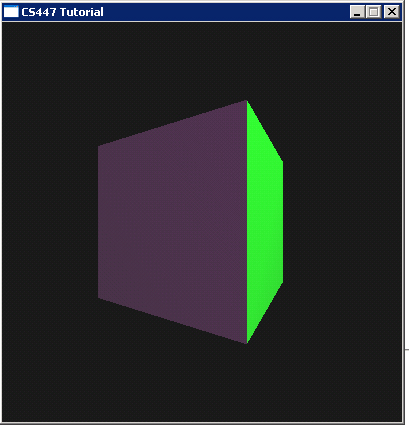void
MyWindow::DrawCube()
{
glBegin(GL_QUADS);
// front
glNormal3f(0, 0, 1);
glColor3f(1, 0, 0);
glVertex3f(-1, 1, 1);
glVertex3f(-1, -1, 1);
glVertex3f(1, -1, 1);
glVertex3f(1, 1, 1);
// back
glNormal3f(0, 0, -1);
glColor3f(0, 1, 0);
glVertex3f(-1, 1, -1);
glVertex3f(1, 1, -1);
glVertex3f(1, -1, -1);
glVertex3f(-1, -1, -1);
// top
glNormal3f(0, 1, 0);
glColor3f(0, 0, 1);
glVertex3f(-1, 1, -1);
glVertex3f(-1, 1, 1);
glVertex3f(1, 1, 1);
glVertex3f(1, 1, -1);
// bottom
glNormal3f(0, -1, 0);
glColor3f(1, 1, 0);
glVertex3f(-1, -1, -1);
glVertex3f(1, -1, -1);
glVertex3f(1, -1, 1);
glVertex3f(-1, -1, 1);
// left
glNormal3f(-1, 0, 0);
glColor3f(0, 1, 1);
glVertex3f(-1, 1, -1);
glVertex3f(-1, -1, -1);
glVertex3f(-1, -1, 1);
glVertex3f(-1, 1, 1);
// right
glNormal3f(1, 0, 0);
glColor3f(1, 0, 1);
glVertex3f(1, 1, 1);
glVertex3f(1, -1, 1);
glVertex3f(1, -1, -1);
glVertex3f(1, 1, -1);
glEnd();
}
|

